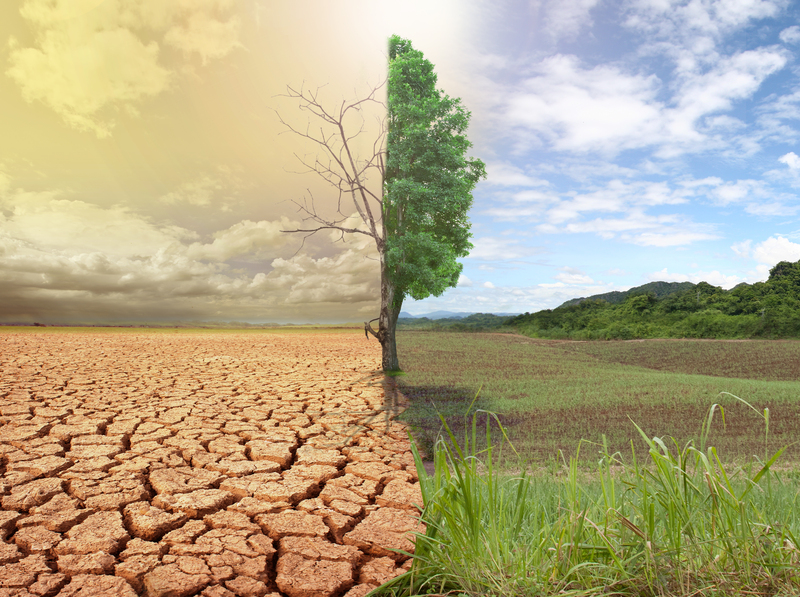Understanding Dangerous Waste: Hazardous Material Definition
As our society advances, so does the complexity of the materials we use in industry, healthcare, technology, and even daily household activities. Among these materials are substances that pose serious risks to human health and the environment. Known as dangerous wastes or hazardous materials, these substances require careful management, strict regulations, and informed handling. In this comprehensive guide, we explore the hazardous material definition, the different types of dangerous waste, their effects, and the best practices for their safe disposal.

What is Dangerous Waste?
Dangerous waste is a term used interchangeably with hazardous waste to describe any material that, due to its chemical, physical, or biological properties, can cause significant harm to human health or the environment. These substances are generated from a variety of sources, including industrial processes, healthcare facilities, laboratories, agriculture, and households.
Main Characteristics of Dangerous Waste
- Toxicity: Waste that contains poisons capable of harming living organisms.
- Ignitability: Materials that can easily catch fire.
- Corrosivity: Substances that can erode or destroy living tissue or materials like metals.
- Reactivity: Waste that can cause explosions or release toxic gases when exposed to other elements.
Any waste exhibiting one or more of these properties falls under the hazardous waste classification.
Hazardous Material Definition
According to regulatory agencies like the U.S. Environmental Protection Agency (EPA) and the European Environment Agency (EEA), hazardous materials are substances that can pose a substantial threat to public health or the environment due to their dangerous properties. These may include chemicals, radioactive materials, biological waste, and certain types of electronic waste.
Regulatory Definitions
- EPA: Defines hazardous waste as waste with properties that make it dangerous or capable of having a harmful effect on human health or the environment. It includes listed wastes (identified by the EPA as hazardous) and characteristic wastes (based on ignitability, corrosivity, reactivity, and toxicity).
- OSHA (Occupational Safety and Health Administration): Considers hazardous materials as any substance or chemical that is a health hazard or a physical hazard.
- DOT (Department of Transportation): Includes materials that are capable of posing an unreasonable risk to health, safety, and property when transported in commerce.
Types of Hazardous Waste
Understanding the various forms of dangerous waste is crucial for proper management. Below, we categorize hazardous wastes into several common types:
1. Chemical Waste
- Solvents such as acetone, benzene, and methanol
- Pesticides and herbicides
- Acids (sulfuric acid, hydrochloric acid)
- Paints and dyes
2. Biological Waste
- Pathological waste (tissue, blood)
- Sharps (needles, scalpel blades)
- Microbial cultures
3. Radioactive Waste
- Byproducts from nuclear reactors
- Medical radioactive isotopes
- Contaminated laboratory materials
4. Electronic Waste (E-Waste)
- Discarded computer monitors and TVs (contain lead, mercury, cadmium)
- Batteries
- Cell phones and small electronics
5. Industrial Waste
- Leftover chemicals from manufacturing
- Sludge from wastewater treatment
- Metal shavings and contaminated scrap
Why is Understanding Hazardous Materials Important?
The importance of recognizing and correctly classifying dangerous waste cannot be overstated. Mishandling hazardous materials can result in:
- Health problems such as respiratory issues, poisoning, skin burns, and even cancer.
- Environmental pollution contaminating soil, water, and air, leading to lasting ecosystem damage.
- Legal consequences for individuals or organizations that fail to comply with hazardous waste regulations.
- Fires and explosions due to the reactive properties of some hazardous substances.
Proper hazardous waste management protects public health, preserves the environment, and ensures compliance with local, national, and international laws.
How is Hazardous Waste Identified?
Identifying dangerous waste involves several steps and often requires the expertise of trained professionals. The process typically includes:
- Material Safety Data Sheets (MSDS): Checking the documentation that accompanies chemicals and materials to determine their hazards.
- Waste Analysis: Laboratory tests that reveal chemical composition and hazardous characteristics.
- Regulatory Lists: Consulting lists (such as the EPA's F-list, K-list, P-list, and U-list) that catalog substances considered hazardous.
- On-Site Inspections: Visual assessments and interviews with facility operators.
Labeling and storage regulations are also stringent, requiring clear identification of hazardous materials to prevent accidental exposure or improper disposal.
Common Sources of Dangerous Waste
Many sectors and activities produce hazardous materials. Some of the most common sources include:
Industrial and Manufacturing Facilities
- Chemical manufacturing plants
- Oil refineries
- Metal fabrication workshops
- Paint and dye factories
Healthcare and Laboratories
- Hospitals and clinics
- Pharmaceutical factories
- Research and teaching laboratories
Households
- Cleaning agents and solvents
- Batteries
- Pesticides and garden chemicals
- Broken thermometers (mercury)
Each of these sources has unique waste management needs, requiring tailored strategies for safe handling and disposal.
How is Hazardous Waste Managed and Disposed?
Effective dangerous waste management includes segregation, storage, transportation, treatment, and final disposal or recycling. Here's an overview of the steps involved:
Segregation
Separating hazardous materials from non-hazardous waste is the first, crucial step. This minimizes cross-contamination and simplifies further processing.
Proper Storage
- Use of approved containers labeled with appropriate hazard warnings
- Designated storage areas with restricted access
- Regular inspection for leaks, spills, and container stability
Transportation
- Licensed hazardous waste carriers only
- Compliance with national and international transport regulations (like DOT or ADR European Agreement)
- Use of spill-proof, secure containment systems
Treatment
- Physical methods like incineration, filtration, or encapsulation
- Chemical neutralization to render waste non-hazardous
- Biological treatment using specialized microbes
Final Disposal
- Engineered landfills designed specifically for hazardous waste
- High-temperature incinerators with emissions controls
- Recycling and reclamation, when possible
Improper disposal, such as pouring chemicals down the drain or in regular trash, can lead to severe consequences for communities and the natural world.
International and Local Regulations on Hazardous Waste
Due to the potential for widespread harm, numerous regulations exist to control the production, transport, and elimination of dangerous waste. Key regulations include:
Resource Conservation and Recovery Act (RCRA) - United States
This pivotal law governs the disposal of solid and hazardous waste and sets standards for treatment, storage, and disposal facilities (TSDFs).
Basel Convention - International
A global treaty aiming to reduce movements of hazardous waste between nations and prevent transfer from developed to less developed countries.
European Union Waste Framework Directive
Sets standards for the classification, shipment, and processing of hazardous materials across EU member states.
Non-compliance can result in heavy penalties, shutdowns, and legal action. Regular training, audits, and up-to-date knowledge of regulations are essential for any business dealing with hazardous substances.
Environmental and Health Impacts of Improper Hazardous Waste Handling
The dangers of mishandling dangerous waste are profound:
- Contaminated drinking water from landfill leaks or illegal dumping
- Toxic air emissions from burning hazardous materials
- Biodiversity loss due to soil and water contamination
- Increased cancer rates and other chronic illnesses among exposed populations
- Explosions and chemical fires endangering workers and communities
Vigilance and proactive management are essential to minimizing these risks and protecting future generations.
The Future of Hazardous Waste: Trends and Innovations
The field of hazardous waste management continues to evolve with advancements in science and technology. Some forward-thinking trends include:
- Adoption of green chemistry principles to design safer chemicals and reduce waste generation at the source
- Use of bioremediation and phytoremediation techniques, employing plants and microorganisms to break down hazardous substances
- Deployment of robotics and AI in waste sorting and monitoring hazardous environments
- Expanding circular economy models to encourage reusing and recycling hazardous materials
These approaches aim to minimize the creation of hazardous waste and regenerate resources for sustainable future use.

Best Practices for Safe Handling of Dangerous Waste
- Always follow regulatory guidelines for storage, labeling, and transport of hazardous substances.
- Train staff regularly in proper handling, emergency procedures, and personal protective equipment usage.
- Maintain clear documentation and records for all hazardous waste movements and treatments.
- Engage certified waste disposal companies for collection and processing.
- Practice spill and exposure drills to ensure swift, effective response in case of emergencies.
By following these best practices, individuals and organizations can significantly reduce the risks associated with dangerous waste.
Conclusion: The Importance of Hazardous Waste Awareness
In summary, understanding dangerous waste and the hazardous material definition is vital for protecting our health, environment, and communities. Effective management of hazardous waste--from identification and classification to safe disposal--is both a legal obligation and a moral imperative. As we innovate and grow, maintaining vigilant, responsible practices around dangerous materials ensures a safer, cleaner, and more sustainable world for all.
Want to learn more about safe chemical handling or hazardous waste recycling? Stay informed, stay prepared, and share this knowledge to create a culture of safety and sustainability in your workplace and beyond!